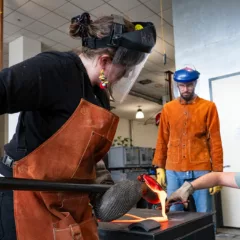[Noreen strolls through a psychedelic homage to one of Philadelphia’s most famous public artworks, and reflects on the experience of being totally immersed in color. — the Artblog editors]
From Tyler School of Art’s Distinguished Alumni Mentoring Program comes Polly Apfelbaum + Dan Cole: For the Love of Gene Davis–a two-person show grounded in the work of American painter Gene Davis, who in 1972 created “Franklin’s Footpath,” a 414-foot-long striped painting on the Ben Franklin Parkway in front of the Philadelphia Museum of Art.
Apfelbaum goes off the wall
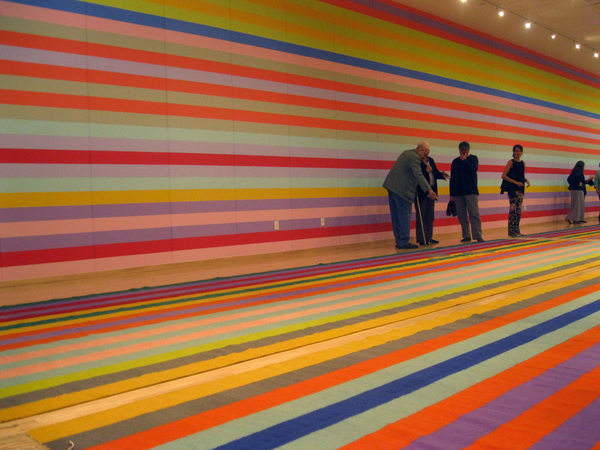
Born in 1920, Davis worked as a painter from 1949 until his death in 1985. Often considered the spearhead of the Washington Color School movement, Davis took a color-field approach to abstraction, using bold and rhythmic colors and defining a new era in 20th-century American art. Soon, Davis’ macro-paintings turned into commissioned, large-scale public works, such as the Philly-based “Franklin’s Footpath”.
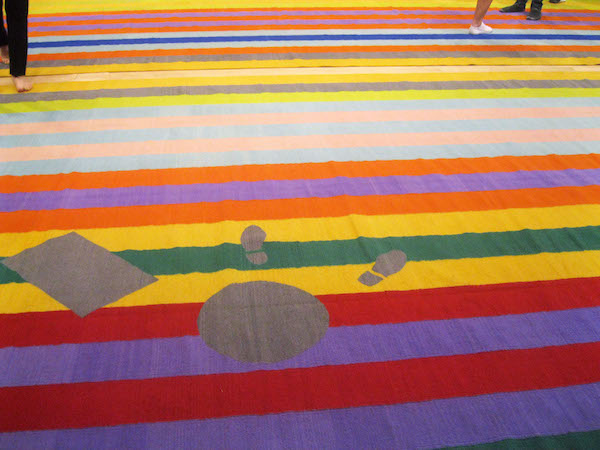
Installed at Temple Contemporary, For the Love of Gene Davis explores a unique visual dialogue between Apfelbaum and Cole, and explodes with the cultural significance and vibrant musicality of Davis’ monumental “Footpath”.
Apfelbaum’s installation consumes the viewer upon entry into the gallery—the entire room is quite literally a painting. Floor-to-ceiling wallpaper, in broad and vibrant horizontal stripes, wraps around the entirety of the long, rectangular space, accompanied by four rugs of the same pattern. The monumentality of Apfelbaum’s work alone reflects the show’s basis in Davis’ large-scale work.
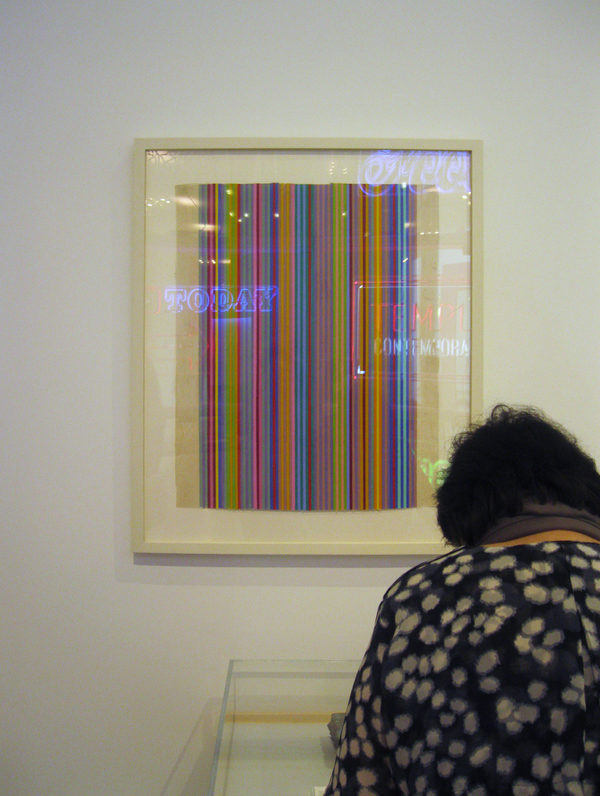
I asked Apfelbaum about her vision of the relationship between her own work and Davis’. Her previous paintings oppose traditional formatting, being installed on the floor rather than on the walls of a gallery. Often, Apfelbaum’s works are called “fallen paintings,” and while they lie on the floor, they are not rugs to be walked on.
However, Apfelbaum evolved the horizontal paintings in this show by allowing them to be walked on–a format inspired by the experimental nature of, and pedestrian access to, Davis’ work. These new paintings can not only be walked on, but walked through, transforming the room into an enormous field of color. “A lot of people have been telling me how comfortable they feel in this room,” Apfelbaum said, “and we’re really happy about that.”
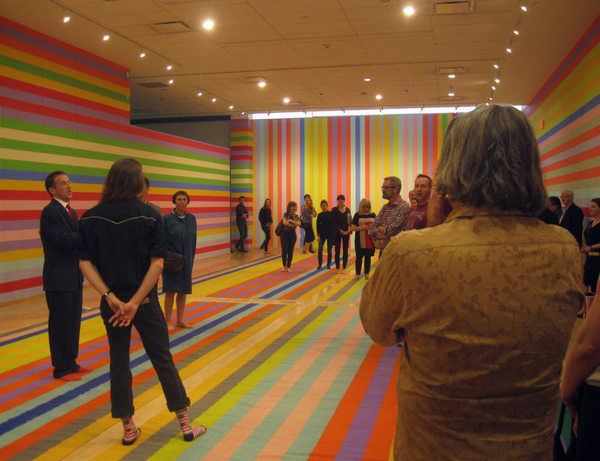
Observing from the perimeter of the gallery, I noticed the spatial boundaries of the architecture begin to disappear, blurred by the loud stripes of color. Complementary color choices paired side-by-side create visual tension—oranges buzzing against pale blues, vibrating with cool purples. In other moments of the painting, analogous colors rest next to each other, sharing a calm and gentle harmony. I reveled in the feeling of the undulating colors beginning to absorb and transform the physical boundaries around me—a feat of installation attempted by many and fully realized by few.
Paint and video converge
This play between space and color continues into the adjacent room, where the work of Dan Cole awaits the viewer. The smaller room, unfortunately, constricts the scale of Apfelbaum’s counterpart. In Cole’s work, three projectors flood the painted walls with moving pictures; one shows a scene from the 1971 film “Harold and Maude,” while the other two show the same film of Gene Davis painting his much-referenced work. To Cole, the influence of Davis’ enormous, endless stripes manifests in the projected scene from “Harold and Maude,”offering two anchoring moments of the cultural era from which Cole and Apfelbaum are drawing.
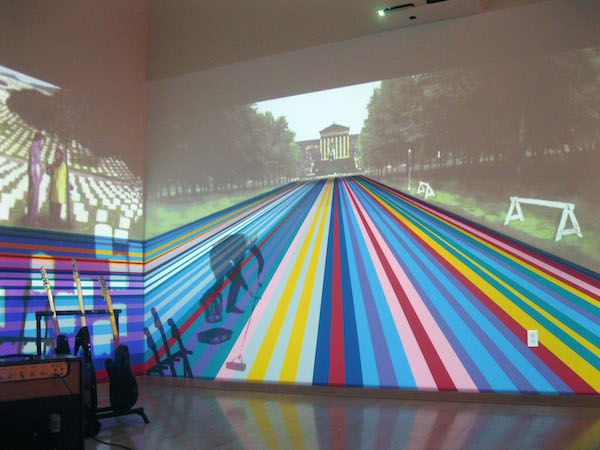
The general impression of the show is an exuberant and lively homage to Gene Davis, with Apfelbaum’s larger-than-life installation, Cole’s quirky and colorful video projections, and the artifacts from “Franklin’s Footpath”. Perhaps, in sharing their love for this moment in American abstraction, Apfelbaum and Cole will inspire a new generation of art created for the love of Gene Davis.
The exhibition is the outcome of the second annual Distinguished Alumni Peer Mentoring Program. This six-month mentorship, sponsored by the Dean of the Office of Tyler School of Art, seeks to foster ongoing relationships between distinguished alumni and recent graduates. For the Love of Gene Davis is the second installment of the program, pairing celebrated graduate Polly Apfelbaum (Printmaking ‘78) with young video artist Dan Cole (Painting/Drawing/Sculpture ‘10).
For the Love of Gene Davis is now on view at Temple Contemporary until July 11, 2014. Gallery hours are Wednesday to Friday, 11 am to 6 pm, or by appointment.



